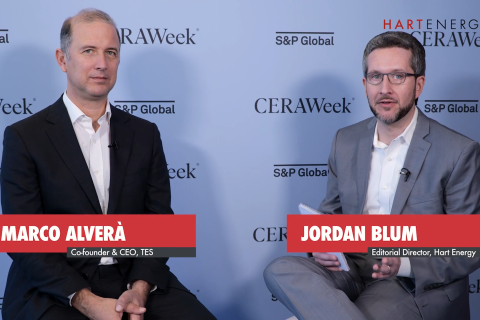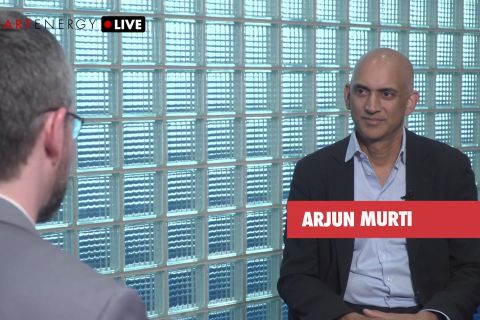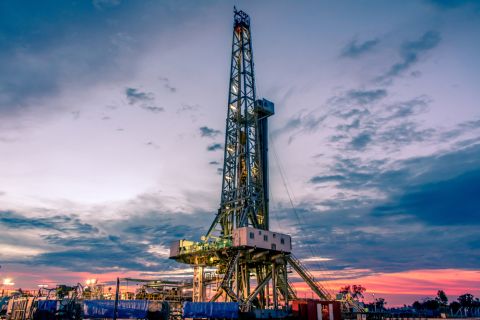Before the oil and gas industry began using passive seismic or microseismic monitoring to image hydraulic fracture geometries in shales, the technique had been applied successfully in tight sand plays. As stimulation fluids are injected under pressure, tight sandstones usually generate regular, planar fractures that grow away from the wellbore. Passive seismic receivers in offset wells pinpoint small microseismic movements, enabling operators to estimate the direction, height, and length of induced fractures. Years ago, completions engineers developed reliable workflows using microseismic images to calibrate and validate fracture simulation models. Gaining a better understanding of the true geometry of these relatively simple fractures enabled them to enhance completion designs and improve reservoir drainage. Complications arose, however, when these same techniques were applied to the complex fracture geometries that often occur in shales.
What is the SRV?
Operators have used microseismic monitoring for years to unravel shale behavior under hydraulic fracture stimulation. Microseismic imaging has conclusively demonstrated that, unlike the single fracture planes typical of tight sands, shales tend to generate more complex, branching networks that expand in multiple directions. Multistage fracture treatments often overlap and interact in intricate ways with natural fractures in the rock. As a result, the simple fracture modeling tools of the past don’t provide valid simulations for the scenarios with fracture complexity.
As an empirical replacement for reliable modeling of highly complex fracture networks, the industry came up with the concept of the stimulated reservoir volume (SRV). In essence, the SRV represents the total volume of reservoir rock that has been hydraulically fractured. SRV calculations are based almost exclusively on the location of microseismic events recorded during stimulation. These acoustic snaps, cracks, and pops caused by fracturing rock are typically displayed as colored dots. To estimate the SRV, engineers outline the dots to form discrete reservoir volumes associated with each fracture stage and add them all together. This is the so-called “dots-in-the-box” approach. Studies have shown correlations between the SRV and well performance, leading to the widespread assumption that the stimulated volume is equal to the volume of reservoir uniformly draining oil or gas. Unfortunately, this is rarely, if ever, true.
The SRV concept is useful mainly as a way of qualitatively comparing fracture treatments. In terms of reservoir drainage, however, it is overly simplistic and overly optimistic. Why? Primarily because the location of a microseismic event does not identify the type of rock movement or geomechanical deformation that created it. Geomechanically, it is critical to distinguish between two main components of rock movement. With shear deformation, which generates acoustically louder micro-seismic events, fractured rock faces slide past each other. With tensile deformation, which is much quieter or aseismic, fracture faces move away from each other. Recorded microseismic signals primarily indicate shearing but also some opening or closing of the fractures. Shearing occurs when tensile hydraulic fractures cross natural fractures, creating branching points for complex networks. However, only tensile movement opens an actual space within the reservoir through which stimulation fluids and proppants can flow in – and hydrocarbons can flow out.
What is the effective propped volume?
What operators really need to know is not just how much reservoir volume has been fractured during stimulation but how much of the fracture system has been effectively propped open and is capable of flowing. The effective propped volume (EPV) is a fraction of the total SRV. While most engineers are familiar with the concept, many existing workflows assume that the SRV and EPV are identical. Yet understanding the EPV is essential to proper field and fracture completion design and long-term shale productivity.
Two advancements in microseismic and geomechanical interpretation and modeling finally allow geoscientists and engineers to shift their focus from approximating the SRV to quantifying the EPV.
Moment tensor inversion (MTI). MTI is an advanced seismic signal processing technique aimed at sorting out key components of geomechanical deformation caused by fracture stimulation, including expansion, shear, and tensile modes. MTI provides detailed information about the orientation, movement, and branching of natural fracture segments during the hydraulic fracture growth. These images enable engineers to generate a discrete fracture network model and assess relative fracture density throughout the reservoir.
Schlumberger has developed an MTI plug-in for the Petrel E&P software platform that also takes into account the anisotropic character of shale formations. Seismic waves from microseismic sources propagate differently depending on the rock movement and orientation of the sensor and fracture segment relative to local stresses. Anisotropic MTI is better able to sort out critical variations in geomechanical deformation.
MTI is a vital first step toward quantifying the EPV and accurately predicting reservoir drainage. While it indicates where hydraulic stimulation may have opened fractures within the reservoir – a major advancement over the SRV – determining where injected prop-pants have actually gone requires a second important step.
Geomechanical fracture modeling. Recently, fracture modeling technology has caught up with the complexity of the shale challenge. Implementing an engineered fracture design workflow available in Petrel allows integration of a wide range of information to simulate interactions between hydraulic fractures and preexisting natural fractures. Input data include MTI results, reservoir quality interpretations, stress anisotropy, other geomechanical parameters, and detailed measurements of stimulation fluid and proppant volumes. The software simulates complex geomechanical fracture movements and predicts where both shear and tensile fracturing will occur. Validating geomechanical deformations with fracture characteristics derived from microseismic data enables operators to estimate proppant transport, placement and, ultimately, the effective propped volume.
What is the value of integrated EPV modeling?
Since the propped fracture volume is always smaller than the total stimulated volume, obtaining an accurate understanding of the EPV empowers operators to make better operational decisions. By targeting EPV rather than SRV coverage, for example, completion engineers can improve the number, spacing, and overlap of fracture stages along each wellbore to achieve uniform drainage.
More importantly, the EPV provides the key to optimizing well spacing for greater field-wide performance. Instead of simply aligning the hydraulically fractured volumes of adjacent wells, engineers can align the effective propped volumes to avoid overlapping unnecessarily or leaving undrained pockets of oil or gas.
Empirical approximations of the SRV based on simplistic analyses of microseismic events are no longer sufficient to meet the needs of shale operators seeking to maximize production and return on investment. What is needed is a better understanding of how much of the fractured volume is actually propped open and capable of flowing hydrocarbons. New workflows have emerged recently that enable asset teams to better image, interpret, and integrate microseismic with geological and geomechanical data. As a result, they can simulate complex fracture networks more precisely, place wellbores more wisely, and design stimulations to optimize reservoir drainage with fewer wells.
Recommended Reading
Exclusive: TES CEO Sees Electric Natural Gas as a Trillion Dollar Market
2024-03-26 - Marco Alverà, the co-founder and CEO of TES, details how electric natural gas from green hydrogen is a cheaper and easier to produce fuel and shares insight on its e-NG partnership with TotalEnergies, in this Hart Energy Exclusive.
CERAWeek: US Aims to Return Emergency Oil Reserve to Prior Levels by Year-end
2024-03-18 - The U.S. is replenishing the SPR, which currently holds about 362 MMbbl, down from 638 MMbbl three years ago before the sale of a record amount of crude.
Amid Climate Scaremongering, Energy Execs Urge Engagement, Realism
2024-02-06 - From shale boom to net zero goals, industry experts grappled with the contradictions facing the energy industry during SPE’s Hydraulic Fracturing Technology Conference.
Exclusive: Arjun Murti Talks Energy Transition, the Role of Oil, Gas in Meeting Energy Needs
2024-02-16 - Partner at Veriten Arjun Murti gives his perspective on global energy needs and addresses EV adoption in the U.S. in this Hart Energy LIVE Exclusive interview.
Chevron Exec: Shale Still in ‘Early Days’ of Recovery Potential
2024-03-08 - From innovation to shale well recovery rates, executives at Chevron, SLB, Helmerich & Payne and Transocean see a lot more work ahead.




